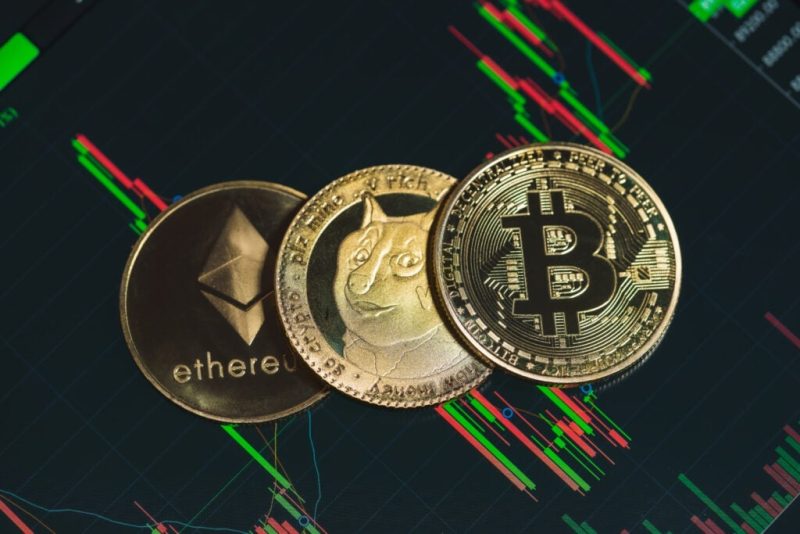[ad_1]

- For the final testnet proof-of-stake transition, Goerli will merge with Prater. The mixed Goerli/Prater community will retain the Goerli identify post-merge.
- Bellatrix, the Prater improve readying it for The Merge will occur at epoch 112260, anticipated at 12:24PM UTC on August 4, 2022.
- After Bellatrix is activated, the Goerli/Prater merge will occur when Goerli hits a complete issue of 10790000, anticipated between August 6-12, 2022.
- Put up-merge, Goerli’s validator set will stay open for particular person stakers to run testnets validators. Stakers who want to begin a Goerli/Prater validator can accomplish that on the Prater Launchpad.
Background
After years of labor to convey proof-of-stake to Ethereum, we are actually nicely into the ultimate testing stage: testnet deployments!
After a number of devnets, shadow forks and merges on deprecated testnets, Sepolia was recently transitioned to proof-of-stake. Now, just one extra testnet stays: Goerli, and its related Beacon Chain, Prater.
The Merge is completely different from earlier Ethereum upgrades in two methods. First, node operators must replace each their consensus layer (CL) and execution layer (EL) shoppers in tandem, reasonably than simply one of many two. Second, the improve prompts in two phases: the primary, named Bellatrix, at an epoch top on the Beacon Chain and the second, named Paris, upon hitting a Total Difficulty worth on the execution layer.
Improve Info
Timing
The Merge is a two-step course of. It begins with a community improve, Bellatrix, on the consensus layer, triggered by an epoch top. That is adopted by the execution layer’s transition from proof-of-work to proof-of-stake, Paris, triggered by a selected Whole Issue threshold, known as the Terminal Whole Issue (TTD).
The Bellatrix improve is scheduled for epoch 112260 on the Prater Beacon Chain, anticipated at 12:24PM UTC on August 4, 2022. Paris, the execution layer’s portion of the transition, will trigerred by reaching a Terminal Whole Issue (TTD) of 10790000 on Goerli, anticipated between August 6-12, 2022.
As soon as the execution layer has exceeded the TTD, the following block will likely be solely produced by a Beacon Chain validator. We think about The Merge to have been accomplished as soon as the Beacon Chain has finalized this block. Assuming regular community circumstances, this could occur 2 epochs, or roughly 13 minutes, after the primary post-TTD block is hit!
A brand new JSON-RPC block tag, finalized, returns the newest finalized block or an error if no such post-merge block exists. This tag can be utilized for purposes to test if The Merge has been accomplished. Equally, good contracts can query the DIFFICULTY opcode (0x44), renamed to PREVRANDAO post-merge, to find out if The Merge has occurred. We suggest infrastructure suppliers monitor general community stability along with finalization standing.
Consumer Releases
The next consumer releases assist The Merge throughout the Goerli & Prater testnets. Node operators should run each an execution and consensus layer consumer to stay on the community throughout and after The Merge.
When selecting which consumer to run, validators must be particularly aware of the dangers of operating a majority consumer on each the EL and CL. An explainer of those dangers and their penalties will be discovered here. An estimate of present EL and CL consumer distribution and guides for switching from one consumer to a different will be discovered here.
Consensus Layer
Execution Layer
Improve Specs
Consensus-critical adjustments for The Merge are laid out in two locations:
- The consensus layer adjustments, underneath the bellatrix directory of the consensus-specs repository
- The execution layer adjustments, underneath the Paris spec within the execution-specs repository
Along with these, two different specs cowl how the consensus and execution layer shoppers work together:
- The Engine API, specified within the execution-apis repository, is used for communication between the consensus and execution layers
- Optimistic Sync, specified within the sync folder of the consensus-specs repository, is utilized by the consensus layer to import blocks because the execution layer consumer is syncing and to offer a partial view of the pinnacle of the chain from the previous to the latter
FAQ
As a node operator, what ought to I do?
Put up-merge, an Ethereum full node will mix a consensus layer (CL) consumer, which runs the proof-of-stake Beacon Chain, and an execution layer (EL) consumer, which manages the user-state and runs the computations related to transactions. These talk over an authenticated port utilizing a brand new set of JSON RPC strategies known as the Engine API. The EL and CL consumer authenticate one another utilizing a JWT secret. Node operators ought to check with their shoppers’ documentation for directions about the way to generate and configure these.
In different phrases, in case you have been already operating a node on the Beacon Chain, you now additionally must run an execution layer consumer. Equally, in case you have been operating a node on the present proof-of-work community, you will want to run a consensus layer consumer. For them to speak securely, a JWT token should be handed to every consumer. Abstract directions for operating a node on the Goerli/Prater community will be discovered here.
It’s value emphasizing that whereas they’re each a part of consensus layer consumer releases, operating a Beacon Node is distinct from operating a Validator Consumer. Stakers should run each, however node operators solely want the previous. This post explains the distinction between each parts in additional element.
Additionally, observe that every layer will keep an impartial set of friends and expose its personal APIs. The Beacon and JSON RPC APIs will each proceed working as anticipated.
As a staker, what do I must do?
The Goerli/Prater Merge is your final alternative to make sure that your validators are accurately configured earlier than the mainnet transition. Operating by the transition now’s strongly really useful to keep away from any sudden points on mainnet.
As defined above, validators on the Beacon Chain might want to run an execution layer consumer after The Merge, along with their consensus layer shoppers. Pre-merge, this was strongly really useful, however validators may have outsourced these features to third-party suppliers. This was doable as a result of the one information required on the execution layer have been updates to the deposit contract.
Put up-merge, validators want to make sure that transactions in blocks that they create and attest to are legitimate. To do that, every beacon node should be paired with an execution layer consumer. Observe that a number of validators can nonetheless be paired to a single beacon node & execution layer consumer combo. Whereas this expands validators’ tasks, it additionally offers a validator who proposes a block the precise to its related transaction precedence charges (which at present go to miners).
Whereas validator rewards accrue on the Beacon Chain and would require a subsequent community improve to be withdrawn, transaction charges will proceed to be paid, burned, and distributed on the execution layer. Validators can specify any Ethereum handle as a recipient for transaction charges.
After updating your consensus consumer, make sure you set the charge recipient as a part of your validator consumer configurations to make sure transaction charges are despatched to an handle you management. In case you have staked utilizing a third-party supplier, it’s as much as your chosen supplier to specify how these charges are allotted.
The Prater Staking Launchpad has a Merge Readiness Checklist that stakers can use to make sure they’ve gone by every step of the method. The EthStaker workforce can also be internet hosting a Merge Validator Preparation Workshop on July 29.
Why is the estimate for the Terminal Whole Issue date so broad?
The volatility in incremental issue per block makes estimating a window for the TTD more durable than with a block or epoch top, therefore the broader anticipated vary. Customers ought to observe that this may even be the case for mainnet’s transition because of adjustments in proof-of-work hash price.
As an utility or tooling developer, what ought to I do?
With The Merge going stay on Goerli, now’s your final likelihood to make sure that your product works as anticipated by the proof-of-stake transition and in a post-merge context. As defined in a previous post, The Merge can have solely minimal affect on a subset of contracts deployed on Ethereum, none of which must be breaking. Moreover, the lion’s share of person API endpoints stay secure (except you utilize proof-of-work particular strategies comparable to eth_getWork).
That stated, most purposes on Ethereum contain far more than on-chain contracts. Now’s the time to make sure that your front-end code, tooling, deployment pipeline and different off-chain parts work as supposed. We strongly suggest that builders run by a whole testing & deployment cycle on Sepolia, Ropsten or Kiln and report any points with instruments or dependencies to these initiatives’ maintainers. If you’re uncertain the place to open a problem, please use this repository.
Moreover, it is best to observe that every one testnets other than Sepolia and Goerli will likely be deprecated post-merge. If you’re a person of Ropsten, Rinkeby or Kiln, it is best to plan emigrate to Goerli or Sepolia. Extra details about this may be discovered here.
As an Ethereum person or Ether holder, is there something I must do?
No. The Ethereum mainnet shouldn’t be affected by this testnet. Subsequent bulletins will likely be made on this weblog earlier than mainnet’s transition.
As a miner, is there something I must do?
No. If you’re mining on the Ethereum mainnet, you have to be conscious that the community will function fully underneath proof-of-stake after The Merge. At that time, mining will not be doable on the community.
As a validator, can I withdraw my stake?
No. The Merge is essentially the most sophisticated improve to Ethereum to this point. To reduce dangers of community disruptions, a minimal method was taken which excluded any non-transition adjustments from this improve.
Withdrawals from the Beacon Chain will probably be launched within the first improve after The Merge. Specs for each the consensus and execution layers are in progress.
I’ve extra questions, the place can I ask them?
The EthStaker group has arrange a discord channel to reply staker and node operator questions. You may be part of their discord here after which use the #goerli-prater channel for help. As talked about above, EthStaker may even host a Merge Validator Preparation Workshop on July 29.
Moreover, a Merge Community Call is scheduled for August 12, 14:00 UTC. Consumer builders and researchers will likely be out there to reply questions from node operators, stakers, infrastructure & tooling suppliers and group members. Observe that this group name is anticipated to occur after the Goerli/Prater merge.
wen merge?
As of the publication of this put up, the time for the Ethereum mainnet proof-of-stake transition has not been set. Any supply claiming in any other case is more likely to be a rip-off. Updates will likely be posted on this weblog. Please keep protected!
Assuming no points are discovered throughout the Goerli/Prater merge, as soon as shoppers have feature-complete releases, a slot top will likely be chosen for the Bellatrix improve on the mainnet Beacon Chain and a total difficulty value will likely be set for the mainnet transition. Shoppers will then make releases that allow The Merge on mainnet. These will likely be introduced on this weblog and in different group publications.
Nonetheless, if points are discovered at any level within the course of or take a look at protection is judged to be inadequate, these items will likely be addressed earlier than persevering with with the deployment course of.
Solely then will it’s doable to estimate the precise date for The Merge.
In different phrases, 🔜.
[ad_2]
Source link




